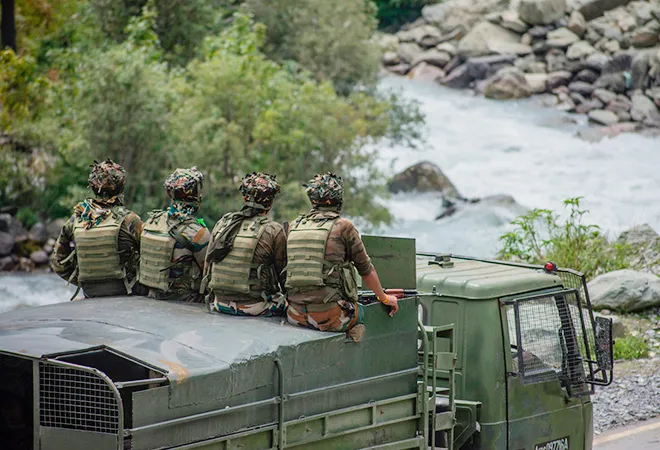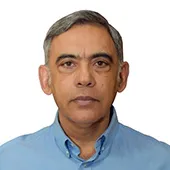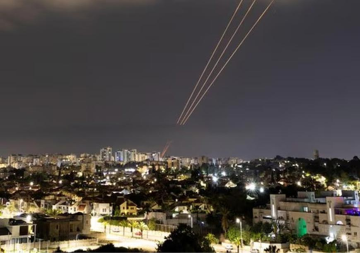 A news report dated 28 June 2021 in Bloomberg
A news report dated 28 June 2021 in Bloomberg makes the assertion that India has undertaken ‘a historic shift’ towards an offensive military posture against China by redirecting 50,000 additional troops (and new equipment) to its Northern border at different locations. It goes on to suggest that whereas before commanders had to adopt a defensive posture against Chinese threats, this rebalancing from west to north provides them offensive-defence options, thereby, making the overall deterrent posture against China that much more robust. This claim also finds mention in other online news platforms and print media. While the facts mentioned in various reports are correct in a bare minimum sense, it is their interpretation of perceived effects, as also past decisions that enabled such a rebalancing, which require a more in-depth look to view the issue pragmatically.
The India-China standoff in Eastern Ladakh shows no signs of any thaw, other than
disengagement at Pangong Tso and the Kailash Range. While the onset of the
summer campaigning season did witness a renewed push by both sides to bolster capabilities and
play mind games. It was evident last year, from the bloody fight at Patrolling Point 14 in Galwan Valley in June and shrill Chinese reactions to Indian preemption along the Kailash Range in August, that this was no ordinary India-China standoff along the line of actual control (LAC). By then, both countries had
built up substantial forces and these have been maintained at more or less the same levels. So, coming back to the curious case of the historic shift of 50,000 troops, it has definitely not occurred all of a sudden. The build-up of infrastructure and forces has been as per a capability development plan, based on a series of classified assessments of strategic threats that have been underway since 2006-07 onward (the author has been involved in two such studies to look at transformation of the army), and directions of the China Study Group (CSG) for the
development of infrastructure in the border regions with China. A quick glance at the timeline of military tensions of the past decade along the Indo-Chinese border is instructive to arrive at a few reasoned conclusions about the rebalancing of forces.
The India-China standoff in Eastern Ladakh shows no signs of any thaw, other than disengagement at Pangong Tso and the Kailash Range. While the onset of the summer campaigning season did witness a renewed push by both sides to bolster capabilities and play mind games.
The Chinese claims in Eastern Ladakh, the Central Sector (Himachal and Uttarakhand), Sikkim, and Arunachal Pradesh are well-known and documented. Ever since 1993,
a series of border protocols and agreements between India and China have been signed and adhered to (though more in the breach by China), till the arrival of President Xi Jinping at the helm of affairs in 2013. That year saw a provocative buildup of troops in the Depsang Plains in Eastern Ladakh and was only resolved after a series of talks over three weeks
in April-May 2013. The following year, on the eve of President Xi’s first visit to India, Indian and Chinese troops faced off at Chumar in SE Ladakh over Chinese road building activity in what India considered its territory. It was
resolved after 16 days, with India building up nearly a brigade-sized force there. The most serious standoff occurred in June 2017 near the India-Bhutan-China border tri-junction in Sikkim
on the Doklam plateau. It involved India intervening on Bhutan’s behalf to prevent Chinese road construction across a very narrow portion of the Torsa River, which could have allowed Chinese troops, in times of conflict, to pose a faster threat to India’s Siliguri corridor, bypassing defences. The standoff lasted over two months with both countries building up forces up to division size with reserves in depth areas. The Indian Air Force and Indian Navy were also involved. While it was resolved after parleys at the highest level, the Indian Armed Forces, having wargamed a Pak-China collusive threat scenario for nearly a decade when Doklam transpired, were now faced with the actual prospect of having to earmark dedicated forces for such an eventuality, without giving up on territorial claims in any of the disputed areas. Then, the PLA upped the ante in April 2020 in Eastern Ladakh and we are where we are today.
The recap of Sino-Indian military tensions has a two-fold objective: First, to highlight a growing threat, of which India’s strategic leadership and its military have been aware for nearly a decade (if not more), and second, to point out that if today in the Ladakh Region, and in Arunachal, India is capable of positioning additional military hardware and forces, maintaining and sustaining them over extended periods, right close to the friction points, it is because of the culmination of processes that were conceived way back at the turn of the century and given an initial impetus by the UPA government, and which have been vigorously followed through by Prime Minister Modi in both his tenures. There’s no denying the sustained and comprehensive allocation of funds for infrastructure development that the NDA government has pumped in over the last seven years. Ladakh and Arunachal are better connected by rail, road, and air than they’ve ever been. It is India’s better connectivity to its far-flung border regions that may have
indirectly contributed to China’s belligerent posturing.
There’s no denying the sustained and comprehensive allocation of funds for infrastructure development that the NDA government has pumped in over the last seven years. Ladakh and Arunachal are better connected by rail, road, and air than they’ve ever been. It is India’s better connectivity to its far-flung border regions that may have indirectly contributed to China’s belligerent posturing.
There’s a plethora of force accretions and major acquisitions that’s been undertaken by all three services since 2012 with China as the primary adversary. Concentrating primarily on the Army and a few Air Force platforms, the army accretions and equipment range from additional infantry divisions for Eastern Command, the raising of the Mountain Strike Corps (the second division possibly still under strength), long range rocket and missile artillery, EW units, air defence, the M777 light gun, and logistics infrastructure for supporting additional troops in high altitude all year round and in difficult terrain. Of late, the rebalancing of forces from the West includes the
reassigning of roles of the two infantry divisions of the Mathura-based offensive corps (which was a secondary charter for them in any case, under the dual tasking policy of military operations) and additional forces for the Central Sector as well as a corps headquaters for controlling all additional troops in Ladakh for offensive options. The IAF has, of course, got the heavy strategic lift and tactical special operations capability in the C-17s and C-130Js respectively, the Chinooks for quick lift of troops and logistics as per the dictates of mountainous terrain in Ladakh and the Eastern sector, along with the formidable AH-64E multi-role attack helicopter. The newest augmentation to the IAF’s offensive capabilities being the Rafale multi-role combat aircraft,
the sixth batch of which was inducted recently. It is also expecting to
receive the S-400 Triumf surface to air missile system as per contract from Russia later in the year.
To conclude, the direction and pace of India’s military transformation is historic, at times forced by the hand of its neighbours, but mostly due to the slow yet deliberate rebalancing process that’s been ongoing for a decade now. The security set up may have been slow to react initially but you have to grant that the threats emanating now have been identified, definitely wargamed at the strategic and operational levels for some years now and the rebalancing of forces is but the culmination of processes that may not have been visible for some years had the Chinese not shown their hand so obviously since 2017. That their belligerence has coincided with the COVID-19 pandemic and India’s tightening of reins over peripheral borders only highlights that our policies may not match expectations all the time but they do deliver when the dragon is on your doorstep.
The views expressed above belong to the author(s). ORF research and analyses now available on Telegram! Click here to access our curated content — blogs, longforms and interviews.




 PREV
PREV


